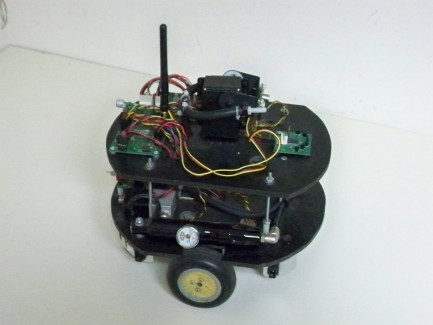Candle Slayer
This is a robot that I built for the Trinity College Fire Fighting Contest. The contest is held each year around April 1st in Hartford Ct USA. The goal is to autonomously extinguish a candle in a maze. The contest rules can readily be found via Google. I have entered about 8 time and this was the most successful.
The robot body is made from 6mm closed-cell plastic that is easy to cut/drill/tap but does warp over time.
Electronics consists of a Microchip dsPIC33FJ64MC804 main board, six IF distance sensors, homebrew IR flame dector, TPA81 IR Thermopile array, UVTron flame detector, soloioid of CO2, 2 drive motors with Quad Encoders, 2 Servo motors for pan an tilt, microphone for sound detection, NRF24L01 radio for feedback, and two 9.6 volt nicad battery packs.
Flame extinction is via CO2. Parts were purchased from a paintball shop.
The dsPIC contains a good selection of peripherals that enable this machine to operate at less than 10% CPU utilization. The heaviest CPU load is detecting the 3KHz start tone.
The machine ihas a top speed of approx 1 meter per second. I limited the speed to about half that for navigating the maze. With three independent flame detectors I was able to accurately sence the flame from about 1 meter away. The CO2 nozels are located next to the TPA81 on the pand & tilt mechanism and are good for about 2 meters away. Raw time to locate and extinguish the candle in the closest room (most tested) is about 15 seconds.
The circuit boards were designed with the gEDA tools and the code was built with the GNU C compiler and assembler distributed but Microchip.
I am starting a new machine for the 2015 competition. Hope that I will not have to raid parts from this one! Thing that I hope to improve on include better obstacle detection and reduced pan & tilt movement.


